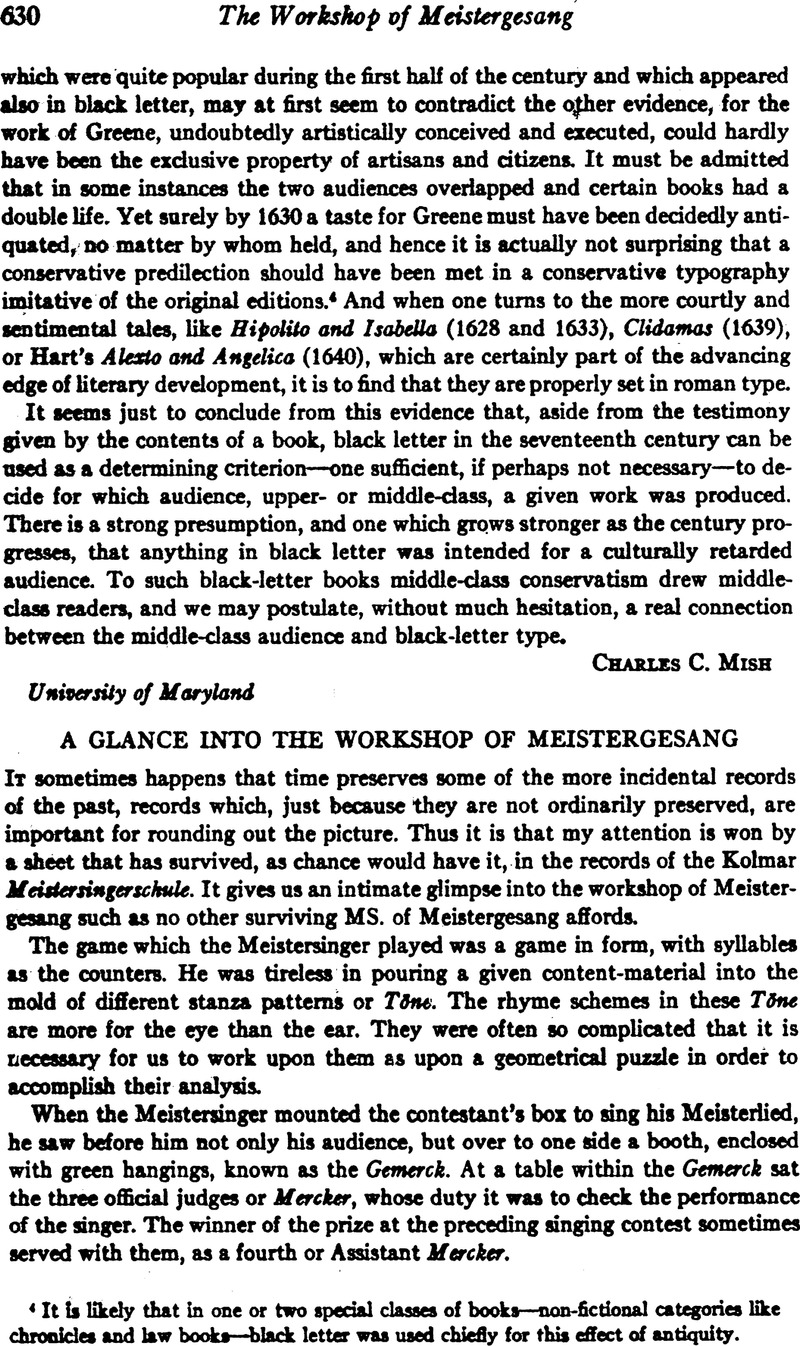No CrossRef data available.
Article contents
A Glance into the Workshop of Meistergesang
Published online by Cambridge University Press: 24 March 2021
Abstract

- Type
- Notes, Documents, and Critical Comment
- Information
- Copyright
- Copyright © Modern Language Association of America, 1953
References
page 630 note 4 It is likely that in one or two special classes of books-non-fictional categories like chronicle, and law books-black letter was used chiefly for fhis effect of antiquity.
page 635 note 1 From Die Meisterlieder des Hons Fols, hrsg. August L. Mayer (Berlin: Weidmann, 1908), p. 275 (in Deutsche Texte des Mittelalters, Bd. xii).
page 635 note 2 The Kolmar Gemerch is in error here. As the reader will observe, it reads: 1+8.
page 636 note 3 The Gemerck is in error here. It reads: a. Text from Bell, Georg Hager, III, 769
page 637 note 4 The Kolmar Gemerck is in error in lines 15, 17, 19 and 21, where it indicates a syllable count of 11 syllables; or perhaps we should say follows a different tradition from the standard count of 10 syllables (cf. Hans Sachs, in the year 1528, Müchen 4998. folio 47a). The above Meisterlied is from Bell, Georg Hager, III, 605.


